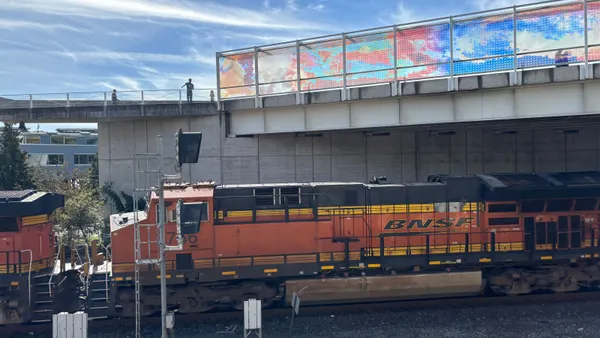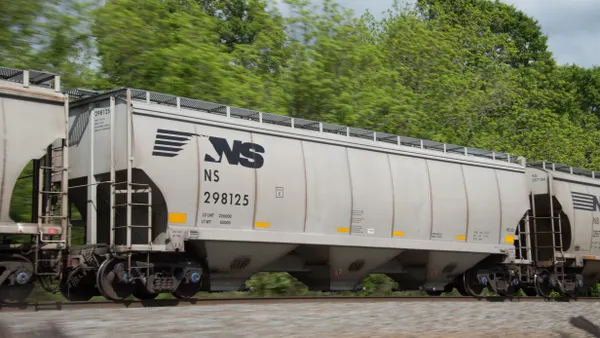Dive Brief:
- Kansas City Southern (KCS) executives detailed a customer-centric version of precision scheduled railroading (PSR), a now-common operations strategy among Class I railroads. Improving service through PSR is the number one priority for the railroad, executives said on an earnings call Wednesday,
- Sameh Fahmy, executive vice president of PSR, said the "intensity" of discipline that comes with PSR, such as watching assets and checking for delays, has "increased substantially in the last three months" at the railroad. "There is also an execution aspect and a discipline that comes with PSR ... and that should [precede] any service design changes," Fahmy said.
- After starting the transition in January, the railroad reported an 11% increase in train velocity and a 5% decrease in dwell time compared to Q1 2018.
Dive Insight:
After teasing interest in PSR principles last year, KCS' transition has begun in earnest. But the KCS story does have some nuance to it: The railroad admits it has been leaving a lot of volume on the table in recent years and needs to become a more reliable and efficient operation to meet existing demand.
Fahmy explained this dynamic means KCS does not plan to close yards as many other railroads implementing PSR have done. Rather, it will make those yards more efficient by reducing switches and dwell.
The KPIs the railroad is tracking and the methods it is using to improve them are roughly the same as other PSR transitions — several of which caused an uproar among customers due to service changes and poor communication.
The railroad says it is focusing on:
- Gross velocity
- Terminal dwell
- Train length
- Car mile per day
- Fuel efficiency
The customer-focused messaging from KCS appears to be a reaction to this history, but only time will tell if the rhetoric results in a better customer experience.
KCS is also working on the most prominent pain points in its network to try to improve velocity for every car by making a few isolated changes. The railroad's Houston hub is one such place.
"Houston is becoming a bit like Chicago and improvement in velocity in that area can significantly improve the velocity of our whole network and obviously the impact of that on our customers and our service as well as on our assets," said Fahmy. Reducing switches and locomotives were some of the changes that sped up the network. The latter of which, Fahmy said, is often misunderstood by PSR observers.
"We also took the assets in a way that it takes out the least reliable assets and this is something by the way that all the PSR railroads did but for some reason, it's not talked about enough. You can take out 10% of locomotives which we did here, 100 out of roughly 1,000 but it does a disproportionate impact on your reliability because you take out locomotives at eight, nine times a year that really you are better off not to even have them," he said.
In a research note released Thursday, Morgan Stanley called KCS' approach "more focused on execution/discipline than service design." The analysts asked: "If the PSR strategies are all different, then are they all created equal? The differences may also be evident in the results."
That evidence is the railroad's more modest targets for operating ratio (OR), according to the note. In addition to 2019 goals for increased velocity, car miles per day, fuel efficiency and train length and decreasing dwell, KCS expects to reach a 60-61% OR by 2020 or 2021. The railroad's adjusted OR was 64.2% for Q1 2019.
By comparison, when the late Hunter Harrison, the so-called father of PSR, took the helm at Canadian Pacific, the OR dropped from 81% to 65.9% in 18 months. That change, however, also came with proportionate customer disruption.














